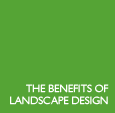Landscape Design
There are two types of gardeners. Gardeners generally buy plants for the love of that particular plant. Buy it, bring it home and then find a place to plant it. Gardeners will sometimes move that very plant throughout their garden many times. The designers, on the other hand, take an overall observation of the property and see it for its potential. They work within a budget to provide you with an overall outdoor living space which may not only include the plants and trees in the gardens but also water features, pathways, seating areas, decks, patios, arbours, pergolas, garden art, furniture and lighting.
ExperTrees believes that a well designed garden has numerous purposefully placed focal points, being objects in the garden that attract your eye to them when you first look at the garden. The object may be a tree, a rock, a water feature, an arbour, a pathway, any element that was purposefully placed there to catch your attention. There is an old gardening saying - “you don’t look at a garden, you look through the garden.” What this saying means to us, is that a well designed garden should be three dimensional, allowing your eye to travel through the garden, making sure you see every plant in its place. A well designed garden should create a composition, where an individual plant has its own beauty but also where each plant is accounted for and has a purpose that contributes to the overall composition of the garden. A designer will select plants not only for its own design value, but also for the value it adds as a complimentary plant to the plants around it. Remember, symmetry does not always equated to balance.
Factors in a Well Designed Garden
Balance and Harmony are the key ingredient to having a unique and creative and visually appealing flow throughout your garden design. A gardener may sometimes have difficulty creating balance in a garden, where as a good designer will design the garden with balance and harmony as the goal. Every plant in the garden will be placed to accent another, as they are generally planted at the same time, or in stages with the overall plan in mind. The gardener who is buying the individual plant for its beauty often has great difficulty tying the composition together using the individual plants they have purchased. The individual plant that was beautiful at the time of planting may become hidden and lost as the gardener continues to add individual plants to the garden.
Balance and Harmony are created through the proper use of , and attention to:
- Colour is very important in garden design. It is one of the key element in having your eye travel though the design. It is a proven fact that certain colours provoke certain emotions in people. The idea is to have a balance of as many different colours as possible, to provoke a wide range of emotions to people who are enjoying the peace and tranquility in the garden they have created. By using different arrays of colour, you can accomplish numerous effects. Blending of colours on certain plants can make the plant seem more vibrant in colour, shape and texture. Blending of colours, along with proper placement, can have the effect of bringing the plant closer, or sometimes farther away, depending on the design intent, which can also make the garden and property seem larger than it is.
- Size (of the actual garden and the individual plants) is another key element to creating a well designed garden. This is closely tied to placement. The size of the garden must be proportional to the size of the property, be able to support the plant material in its maturity, and should meet the needs and desires of the owner as well as considering the maintenance required to upkeep the garden. The size of the individual plants can create various levels in your garden, which contributes to a three dimensional design, moving your eye through the garden.
- Shape (of the garden as well as the individual plants) plays a critical role in the success or failure to create a visually appealing design. The shape of the garden should control the movement of the eye and should be designed with the objective being depth and flow (as related to dimension and balance). The individual plants should be selected for their shape and how it creates interest and variety in the overall atmosphere of the garden. Shape can add uniformity, elegance, balance and harmony.
- Variety of plant material should be one of many objectives when designing a beautiful garden. A variety of plants, selected for their colours, textures, sizes and shapes, should unify the overall garden and add interest throughout the year. In a well designed garden, variety will create movement and contribute to the visual balance.
- Contrast in a well designed garden will create interest and variety. Contrasting plants (ie. evergreens, trees, flowering shrubs, perennials, annuals and grasses) should be selected for their different movement, colour, size, shape and texture. These contrasting elements will stimulate the senses and create a flow to the garden. Contrast can also be created by using a variety of ‘hard goods’ (water features, arbours, pergolas, stones and rocks, garden decor and art) amongst the plants.
- Placement of the plants, as related to dimension, can be difficult for the gardener to accurately determine. This often leads to plants being moved again and again in the search for harmony. A plant, when planted in its proper place, will blend in with the other plants around it and create a balance to the overall design. Placement is critical to the composition as a whole and should be carefully considered. A designer will know inherently where a plant should go, as it was purposefully selected for that one spot, based on the plants characteristics and its ability to enhance the creative design.
- Focal Points, whether plant material or hard good, are important elements that are purposefully placed in the landscape design to create immediate interest. The object may be a tree, a rock, a water feature, an arbour, a pathway, any element that was purposefully placed there to catch your attention. ExperTrees believes that a well designed garden should have many focal points, to move your eye around and through the garden.
- The four seasons that we experience in Southern Ontario should be considered when designing a landscape. Ideally, you want interest and variety all year around. For example, an arbour, which attracts birds, can be a beautiful thing in the winter, as can an evergreen plant. Of course, the spring and summer are easy to plan for, but a designer will think of winter and fall as an opportunity to show off the gardens versatility. Colours and textures are key elements when designing a year-round spectacular garden.
- Practicality, as related to the property owners expectations and needs, should always be a first consideration when designing a landscape, as the owner will generally be the one enjoying the gardens, and also the one maintaining it. If one of the owners objectives is to hide an unsightly shed or utility pole or deal with a privacy issue, then arrangement must be made in the landscape design to deal with that.
A big factor (which should always be the starting point of a landscape design) is the BUDGET. Landscaping can be very costly, mistakes can cost you even more. A landscape designer can save you money down the road, as they will not make the mistakes that could be avoided. Not only is the design thought out for its composition and creation of harmony and balance, a designer will use his horticultural knowledge to create a garden that will thrive for years to come. There are many things to think about and pay attention to that will contribute to the success of a landscape and a professional landscape designer will be able to address all of the factors.
ExperTrees’ professional designers will guide you through the steps to a finished landscape design. It is wise to meet with a landscape designer, prior to starting a landscape design, who will be able to determine the balance between your budget and your expectations, desires and needs.
A good designer will address many topics during an initial consultation.
- budget and size of design area
- soil conditions
- available light conditions (sun/shade)
- water requirements and drainage issue
- privacy issues
- maintenance expectations
- irrigation
- existing plant material
- owner wants (vegetable patch, cut flowers, fruit trees, entertainment areas, BBQ area, hide visual obstructions, etc...)
- owner needs (play area for children or pets)
- Wind Conditions
- Hardiness and Zone
- Access
- Prevalent insects and diseases
- Installation of garden lighting
- Style and personal design tastes of owner (formal vs. informal)
The Benefits of Landscape Design
Besides being the envy of your neighbours, the benefits of landscape design are as varied as the reason for doing it. The primary reason for landscaping your property is the improved quality of life, not only to the owner, but to all people who observe it. Quality of life is measured very personally, whether by the increased privacy that is created or by the emotions (peace and tranquility) the gardens provoke. Landscaping your property is also a environmentally responsible way to protect the future and provide a beautiful environment for future generations. The responsibility of environment protection and beautification is thereby passed down to future generations as well to enjoy and embrace.
It shouldn’t be a primary reason for landscaping your property, but a secondary benefit is the value it will add to your property and the speed in which a beautiful garden will sell your property when you decide to move. Curb appeal is the common term that the real estate industry uses for landscaping.
|





